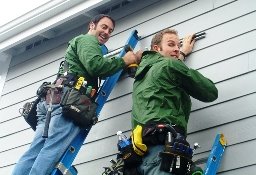 0
comments
Wednesday, April 23, 2008
0
comments
Wednesday, April 23, 2008
This Friday the Team2Times duo will be a the Los Angeles Alternative Building Materials and Design Expo. They will spend the Day with ReUse Network helping to inform people about de-construction and why it is so important on a job-site! If you would like more information about the Alt-Build please go to the site.
Russ and Marcus will be there from 2 to 4pm Friday at booth 103.

